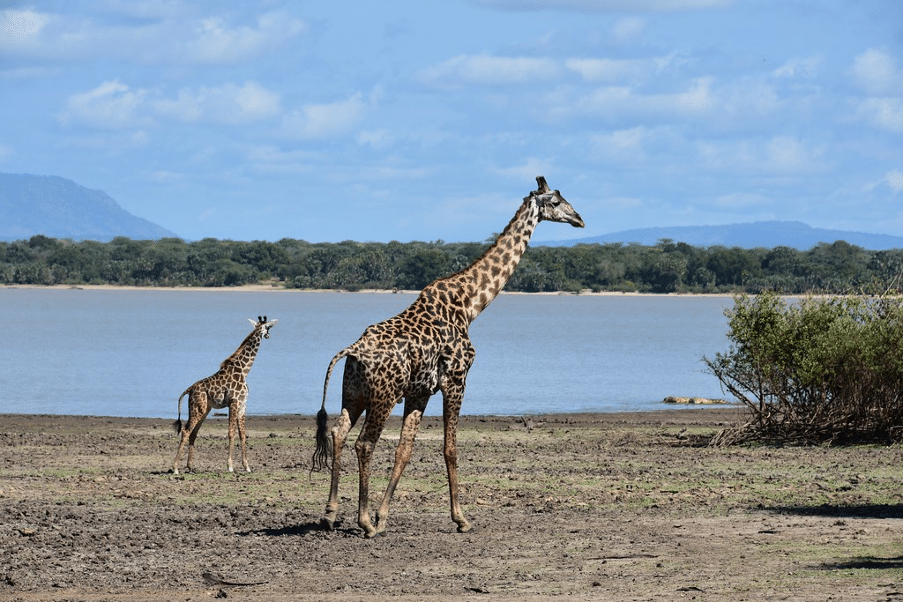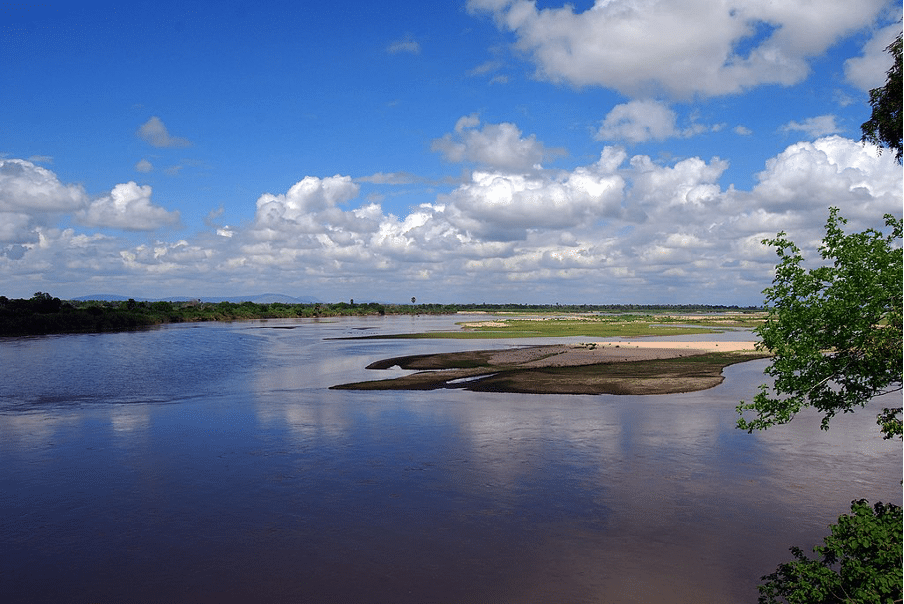About
Top Experiences
Type of Journey
Subscribe to newsletter and stay updated
Read about our travel expeditions, new destinations, new pictures, latest trip schedules
Selous is Africa’s largest game reserve, situated in a protected region in Southern Tanzania. Covering an area of 50,000 km2, the reserve offers undisturbed wilderness and an array of flora and fauna. It is twice the size of the popular Serengeti National Park of Tanzania and three times bigger than Kruger National Park in South Africa. Selous was declared a World Heritage Site due to its diverse wildlife and secluded location. It comprises forests, mountains, grassy plains, and open woodlands.
The Game Reserve is located along the southern Tanzanian safari circuit, providing an escape from the bustling tourist crowds. This prime safari destination is considered to be a hidden gem due to its thriving wildlife areas and the range of activities offered.
The northern section of Selous, now referred to as Nyerere National Park, is home to a network of channels and lagoon that are run off the Rufiji River. The river morphs into a network of streams and lakes, attracting many animals to quench their thirst. The total area of this section of the reserve is 30,893 km2, estimated to be larger than 70 countries. In this extensive and lush landscape resides several species of wild animals, birds, and diverse habitats. Moreover, Nyerere is responsible for providing water supply for the animals living in the region towards the end of the dry seasons.

OVERVIEW
Location: Tanzania
Nearest airport: Julius Nyerere International Airport (DAR), and local airstrips.
How to reach: From Dar es Salaam by road, railroad, or flight
Famous for: African wild dogs, Big Five, birding, game drives, riverboat cruise, walking safaris
Months open: All year
Best time to visit: June to October
WHAT TO SEE
African Big Five
African wild dogs
Wide range of herbivore animals
Over 400 bird species
Rufiji river and Lake Tagalala
Unique vegetation
In 1896, Selous was initially designated as a protected area by Hermann Von Weissman, a German governor of Tanganyika, and was transformed into a hunting reserve in 1905. The reserve was later named after Fedrick Selous, a popular big game hunter, and conservationist. He was killed and buried in Selous Game Reserve during World War I.
In 2019, the Government of Tanzania decided to develop the reserve further and enhance tourism. The northern part of the reserve was formed as a new national park, known to be Nyerere National Park. The name was kept to honor Mwalimu Julius Kambarage Nyerere, the first president of Tanzania.
Wildlife
Selous Game Reserve is known for providing an incredible wildlife safari experience. As many water sources are found in the reserve, such as River Rufiji and Lake Tagalala, it attracts a high concentration of game, opening up opportunities to witness the diverse wildlife. There are approximately 145,000 buffalos, 250,000 impalas, 100,000 wildebeest, 35,000 zebras, and 40,000 hippos.
Moreover, a healthy population of giraffes, Lichtenstein hartebeest, elands, waterbucks, and bushbucks are found. Selous also has puku antelopes, the sable antelope, and the endangered African wild dogs, residing in the Nyerere National Park. A third of the world’s African wild dog population lives in the reserve. Primates such as colobus monkeys and Blue samango monkeys are also found here.

The Big Five animals: elephants, leopard, lion, black rhinoceros, and Cape buffalo are seen in different areas of the reserve. The dry season, from June to October, makes wildlife viewing a rewarding experience since the vegetation becomes thinner and animals gather around the Rufiji River and other waterholes in Selous.
Birding
Selous has over 400 different species of birds, recorded to live in different habitats within the reserve. The most frequently seen bird species are the mosque swallow, the purple banded sunbird, freckled nightjars, African skimmers, palm-nut vulture, peal-spotted owl, and many more. Along the reserve’s lake areas, giant kingfishers, an African skimmer, and the pink-backed pelican are found. Migrant, waterbird species as well as other small waders are plentiful in Selous. November to April are the best months to go birding in Selous as the migratory birds from Europe and Northern Africa are sighted.
Activities to do in Selous Game Reserve
Walking safaris – The thrill of walking safaris cannot be experienced in any of the famous national parks of Northern Tanzania. But, Selous Game Reserve offers the best walking safaris accompanied by naturalist guides and expert trackers. Even the tiniest of the details missed during game drives are covered by walking safaris, such as animal prints and subtly snapped vegetation. Visitors also have the chance to get up-close yet safe sightings of elephants or a lion pride.
Boat cruises – The network of waterways in Selous is one of the main highlights of the reserve. Boat safaris or cruises are the perfect alternatives to walking safaris or typical game drives. It lets visitors explore the different water channels including River Rufiji, lakes, and small streams. Cruises are also relaxing and offer a unique perspective on viewing wildlife. Sunset cruises are a special way to end the day in Selous Game Reserve.
Game Drives – Selous offers morning as well as afternoon game drives that are normally conducted in open roof safari cars, escorted by park ranger guides. Visitors can spot an array of wildlife, from common wildebeest to the endangered black rhino. Night-time safaris are also undertaken where visitors can witness nocturnal animals in the reserve.
Fly-camps – Few lodges and camps arrange overnight fly camps that are ideal for those seeking genuine adventure in Tanzania. It is a journey that is undertaken by truck or on foot to visit secluded areas accompanied by park rangers and a chef. It also involves sleeping out in the raw African wilderness in basic tents.
Hot air balloon rides – These rides are conducted only in Serengeti National Park and the Selous Game Reserve. A hot air balloon ride is a once-in-a-lifetime experience and offers an aerial view of the savannah while visitors can marvel at the wildlife seen below.
Where to stay in Selous Game Reserve
There are many accommodation options offered in Selous such as:
Siwandu Camp – Siwandu was the first safari camp in Selous to offer luxury accommodation. It is set near Lake Nzerakera and provides breath-taking views of the abundant wildlife neighboring it. Siwandu has 10 spacious tents, en-suite bathrooms, wooden decked verandas, and an elevated lounge and dining area.
Sand River Selous – Sand River Selous is a luxury camp located on the banks of River Rufiji and has an idyllic ambiance. It has riverside rooms and hillside suites, each unit built with stone and has thatched roofs. Guests can enjoy panoramic views of the river from open-fronted dining and lounge as well as the sprawling decks.
Beho Beho Camp – This camp is situated in the cooler Selous highlands of the game reserve. It is an intimate and private camp that has only 8 individual bandas or stone-built cottages. It acts as a private home set in the middle of the African bush and offers beautiful views of the northern part of the reserve.
Lake Manze Camp – Lake Manze Camp sits in the heart of the best game area of Selous. It comprises 12 ‘Meru’ style tents complete with en-suite bathrooms, and private verandas. The camp offers exclusive and comfortable services such as private dining and surprise bush meals.
Sable Mountain Lodge – Sable Mountain Lodge is found just outside Matambwe Gate in the northern part of the reserve. It has 8 stone cottages constructed with traditional makuti thatched roofs and two elegant suites.